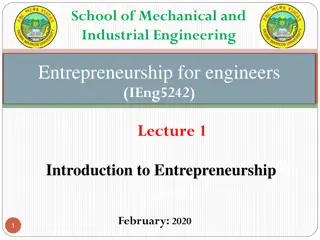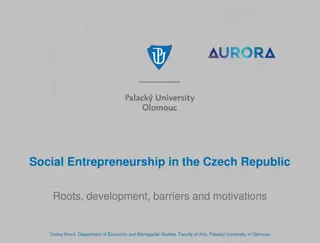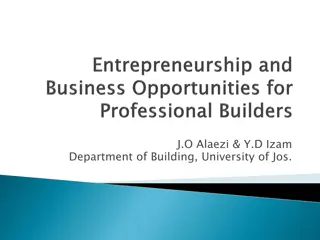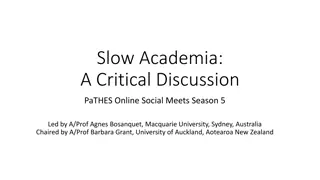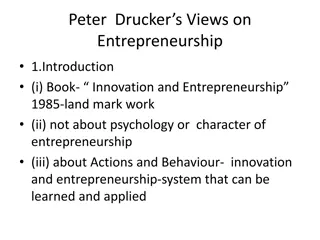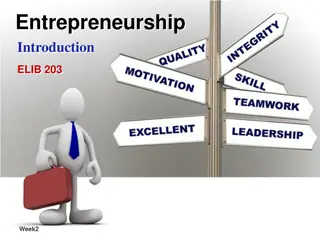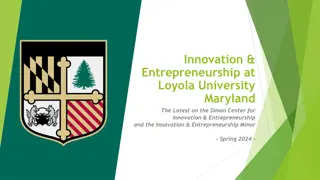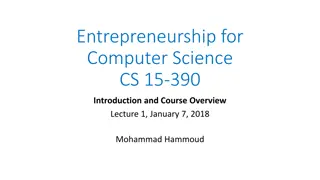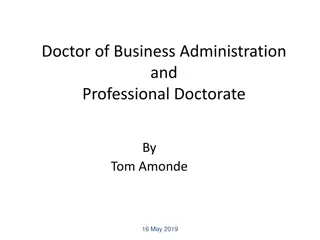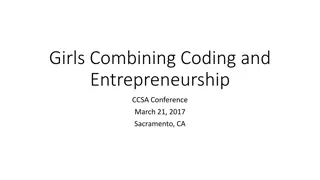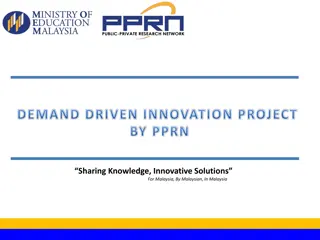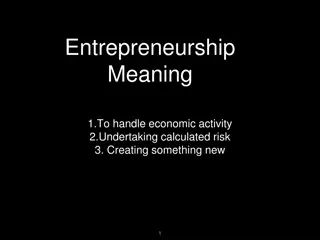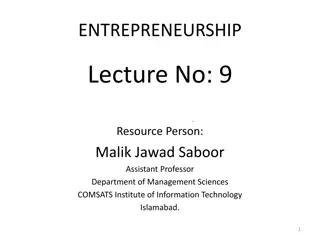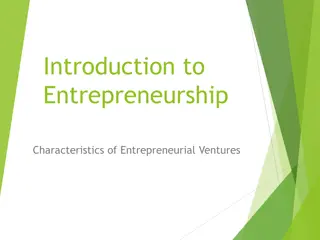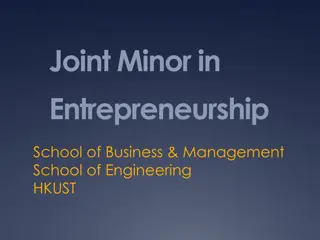Bridging the Gap Between Academia and Industry: Academic Entrepreneurship in the Knowledge Economy
The role of academic entrepreneurship in bridging academia and industry is crucial in today's knowledge economy. Universities play a key role in disseminating knowledge, fostering innovation, and establishing effective university-industry collaborations. Success factors for technology transfer and government funding of basic research further contribute to economic development and industry growth.
Download Presentation

Please find below an Image/Link to download the presentation.
The content on the website is provided AS IS for your information and personal use only. It may not be sold, licensed, or shared on other websites without obtaining consent from the author. Download presentation by click this link. If you encounter any issues during the download, it is possible that the publisher has removed the file from their server.
E N D
Presentation Transcript
Bridging the Gap between Academia and the Industry: The Role of Academic Entrepreneurship Amirul Shah Md Shahbudin, PhD Deputy Dean Academic, Students & Alumni School of Management Universiti Sains Malaysia 11800 Penang, Malaysia
Knowledge Age Universities and high schools become the raw material of economic development as coal mines were the raw material of the industrial age !
The 21st Century Context for Linking Universities and the Economy The Knowledge Economy A world-wide phenomenon Knowledge The new raw material driving innovation, competitiveness, and economic development Economic success is no longer determined by possession (e.g., of raw materials or physical prowess), but by capacity to generate new knowledge and by the ability of the workforce to apply this knowledge successfully (M. Walshok, Knowledge Without Boundaries, 1995)
The Role of Universities in Disseminating Knowledge Develop effective and close co-operation between universities and industry innovation start-up of new companies licensing of university intellectual property promotion of effective university-industry relations better exploit the results of their knowledge in relationship with industry evaluation criteria for the performance of universities
Success Factors for Technology Transfer Business Government Academic Community Know-How Talent Technology Capital Market - Need Successful Value-Added TechnologyTransfer G. Kozmetzky UT-Austin
Ecosystem Lawyers Investors s Head hunters PR agents Other start-ups Patent Firms Real estate Accountants Leasing Banks Students Brokers Itinerant managers Consultants
But why does the government invest in research? Government Funding of Basic Research In Academia Reservoir of Knowledge New Increased Efficiency New Industry Companies (Jobs) Taxes Vannevar Bush Reservoir Theory of Knowledge Science, The Endless Frontier, 1945
The Business of Academic Research Federal dollars to Universities have continued to climb, even while falling in other sectors Source: National Science Board Report 2002
Traditional academic roles Research Creation of new knowledge Breakthroughs and basis research (about half of all basic research in U.S. conducted by universities) Incremental technical advances Education Dissemination of knowledge Graduation of students Service Transfer of knowledge and transfer of technology
Definition of Entrepreneurship Entrepreneurship refers to an individual s ability to turn ideas into action. It includes creativity, innovation and risk taking, as well as the ability to plan and manage projects in order to achieve objectives. This supports everyone in day-to-day life at home and in society, makes employees more aware of the context of their work and better able to seize opportunities, and provides a foundation for entrepreneurs establishing a social or commercial activity
Overview Entrepreneurship is not sufficiently integrated in the curriculum of HEIs The majority of entrepreneurship courses are offered in business and economic studies Chances of being exposed to Entrepreneurship Education are higher when the student is enrolled in a business school or a multidisciplinary institution with a business school. More than half of the student population in Asia do not have direct access to Entrepreneurship Education
Practical Data Only 1/4 of specialized and 1/3 of multidisciplinary institutions without a business school offer entrepreneurship Entrepreneurship most commonly offered to undergraduate or graduate students, fewer courses for PhD students Entrepreneurship education is still at the infancy stage: often person driven and depending upon the efforts of individuals In only 20% of HEIs the teaching staff must undergo training in order to teach entrepreneurship. Less than 1/3 of staff teaching entrepreneurship had practical experience with entrepreneurship outside academia.
Teaching tools There is a gap between methods applied and those that are seen as the most effective Experience-based methods are crucial: traditional pedagogies (lectures) are not the most effective Most effective methods indicated: group techniques for new business ideas, case studies, business planning workshops Essential element: crossing boundaries between disciplines, and multi-disciplinary collaboration
Problems/Obstacles Shortage of funding Too few professors of entrepreneurship Little incentive and reward for teachers Faculties and departments tend to work separately Mobility between HEIs and business is low HEIs are not sufficiently involved with their alumni
Actions for HEIs Set up a strategy or action plan Create an entrepreneurial hub Offer introduction to entrepreneurship to all, and opportunities to follow more specific courses Set up incentives to motivate and reward staff Encourage the spontaneous initiative of students Award credits for activities and practical work
National/Regional Innovation Systems (NIS/RIS) Policy makers attempts to increase Economic growth Entrepreneurship Employment, and Taxable income Innovative firms a.k.a high technology companies Assumed to create high salary employment Modern version of smoke-stack industry Most firm start small and never grow; 3% manage to grow beyond 100 persons Large body of previous research - growing
The ideal: Triple Helix Govern- ment b. A laissez-faire model a. An etatistic model c.Triple Helix
What do we know about university/business collaboration Sometimes it leads to spun out business But; those conducting research in close proximity to business become better scientists and if they start businesses become more likley to succeed
Who are the Worlds Successful Entrepreneurs Steve Jobs Ingvar Kamprad Mark Zuckerberg Jack Ma Salvatore Ferragamo Josiah Wedgewood
Incubator Initiatives 1. University involvement: Success of incubator depends on availability of graduates, access to R&D facilities, and environment of intellectual creativity 2. Collaboration & networking: Networking between industries, universities, research institutions and incubators provide mutual support & encouragement 3. Experienced incubator management: To render continuous support, coaching, mentoring and motivation to start-up companies 4. Conducive business environment: Incubators to function not as landlord but to create conducive business environment to incubatees 5. Linking business & technology: Constitute important channels for distribution of knowledge and tools for business success
Potential Entrepreneurs Academic and Students Do we have the capital? Do we have ideas? Do we have the resilience? Can we balance life work balance?
Thank you Q & A


